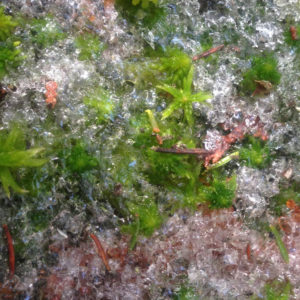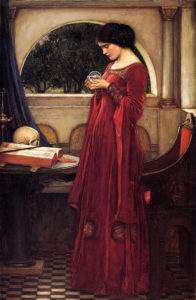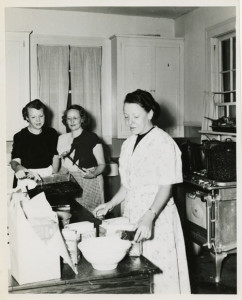Just a few days ago I saw the most beautiful photographs from a friend in Maine of the Sabbathday Lake Shaker Community covered in snow, a snow that had just fallen. The Community is in New Gloucester, not far from Portland. Another friend is in Northern Ontario, up near the Arctic Circle, and that’s where the photograph above comes from. She calls it “Slow Quaffeth the Moss.” There, winter is becoming spring, and in many other places it is clear that winter is holding on with all its might.
Be that as it may, we come tonight to a transition time that actually beckons summer. It is May Eve, Walpurgis Night, which sounds so lovely in its Dutch and German version, condensed to one word, Walpurgisnacht, named not for May but for St. Walpurga, whose feast day happens to come tomorrow, as well. This is a holiday respected mostly in Northern Europe, especially in Scandinavia and in Germany, though it is celebrated as well in England and in Italy and to be sure many other places, though in the States, not so much. But for Walpurgis Night, which comes with the setting sun each April 30, it is customary to light a bonfire and to eat gravlax, a thinly sliced cured salmon, served with dill and mustard and a good hearty Nordic dark rye bread, washed down with quantities of sparkling wine. With this simple act, hopefully in communion with those we love, we bid a warm welcome to the gentler time of year, for tomorrow brings May, and summer. Despite the icy moss in Northern Ontario, despite the snow on the barn at Sabbathday Lake, our ancestors viewed the wheel of the year as one based on the solstices and equinoxes and their quarterly divisions, and as this 30th of April becomes the First of May, the spokes of that wheel shift to the next quarter: We are now halfway between Spring Equinox and Summer Solstice, which, to them, it being the longest day of the year, was the height of summer: Midsummer. And so we sing old songs like the Padstow May Morning song with refrains like For summer is a’comin’ in today, for it is. Even if there is still some snow on the ground. That snow is not long for this world.
Beltane is another name for May Day. It comes from the Celtic calendar, the opposite spoke of the wheel from Samhain, which celebrates the coming of Winter on the eve of November. Again, bonfires. In England, meanwhile, it’s not so much the eve as the morning that’s important for May Day, and the custom is to rise before dawn and head out to the fields to “bring in the may,” returning home with bundles of flowers that are then used to decorate the doorways, the hearth, the windows, everything. Though heartier revelers would head out from Walpurgis Night, out to the woods, for a celebration, often quite amorous, that lasted through to morning.
It is a lovely night, Walpurgis Night, and we encourage you to go be in it. You may not have a place to light a big bonfire, but if you have a fire pit outside in your yard, why not go ahead and light a little fire, or at least a lantern or candle? And while you’re sitting around the fire, you may as well break open a bottle of sparkling wine. I’ve already stopped by to visit my friends at Neptune Fish Market on Dixie Highway in Lake Worth. The smoked salmon was just out of the smoker when I asked for it. It smells incredible: smokey and mysterious, mysterious like the wheel of the year that forever is turning.
The photograph above, “Slow Quaffeth the Moss,” is by Jane Siberry. Jane’s new record is titled “Ulysses’ Purse.” On it is a song you should all hear at least twice; once to hear it, once more to listen to it, at which point you may wish to listen again and again. The song is called Morag and it begins, “Arise from your mossy bed, leave your lichen dreams aside, the deer have left clear trails for you to find.” I can’t get enough of it. Click on the link; let me know what you think.


